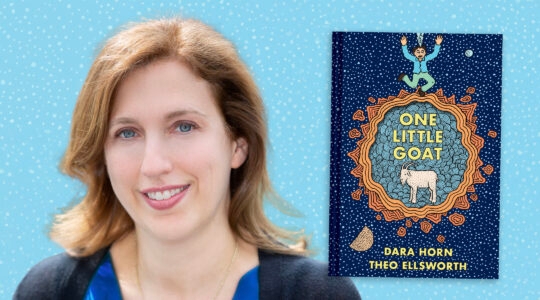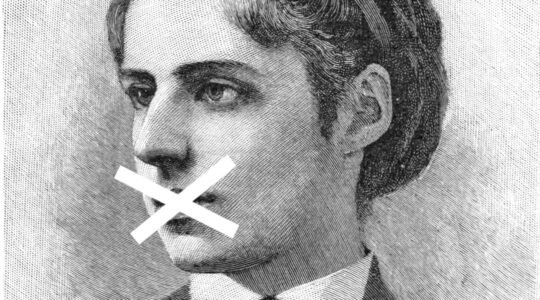The phrase goes “behind every successful man is a woman.”
Even now, in 2021, as women take on more and more leadership roles both in the Jewish world and beyond (just look at Vice President Kamala Harris), we constantly look to our most holy texts to find reassurance for what we know to be true about ourselves as women and leaders.
This week, the harrowing narrative of the Israelite slaves comes to a thrilling conclusion at the Sea of Reeds. All known laws of nature are broken in yet another stunning display of God’s might, and the Israelites reach freedom as their remaining oppressors are swept under the tide. The former slaves have already witnessed the ten plagues, fled at the crack of dawn, and now passed through a sea on dry land. What now? Where do we go from here?
In this moment of tremendous victory, Moshe needs to ensure that the Israelites understand the depth of the miracles that brought them to where they are. So he leads them in a song of gratitude to God in his first act of post-Egypt leadership.
Maybe if they started this new chapter with praise and thanksgiving for their lives, the Israelites would be able to march towards their destiny with confidence.
Crossing the Red Sea is a moment of transition not just for Moshe and the Israelites but for Miriam as well. When we first meet Miriam in Parshat Shemot, we are not told her name. She is referred to simply as “אֲחֹת֖וֹ – his sister” (2:4) as she keeps an eye on Moshe’s basket from the relative safety of shore. We are told that she watches “מֵרָחֹ֑ק – from afar” (2:4) to see what will happen to the baby brother whom their mother can no longer hide from the Egyptians and their decree.
As the older sister to two brothers, I cannot help but imagine myself in Miriam’s place among the reeds, hoping against every logical fiber of her being for a second chance. What now? Is there anywhere to go from here? So when Pharaoh’s daughter sees an Israelite baby in the reeds and takes pity on him, of course Miriam risks her life to give her infant brother this second chance.
She leans into the relational epithet the text has assigned her; so far, she has no identity outside of the crucial role she plays in saving Moshe.
Now, however, 15 chapters and eighty-odd years later, the baby brother Miriam watched from afar no longer needs her protection or intervention. The desperate cry of the נער that Pharaoh’s daughter heard in 2:6 became a clarion call to Pharaoh himself. Miriam watches as Moshe learns how to speak so that people will listen and tries to lead a nation that does not yet know who they are. She follows him through ים סוף – the Sea of Reeds, and she listens for his whole song.
And then she does something remarkable:
וַתִּקַּח֩ מִרְיָ֨ם הַנְּבִיאָ֜ה אֲח֧וֹת אַהֲרֹ֛ן אֶת־הַתֹּ֖ף בְּיָדָ֑הּ וַתֵּצֶ֤אןָ כָֽל־הַנָּשִׁים֙ אַחֲרֶ֔יהָ בְּתֻפִּ֖ים וּבִמְחֹלֹֽת׃ (15:20)
Then Miriam the prophetess, Aaron’s sister, took a timbrel in her hand, and all the women went out after her in dance with timbrels.
Miriam picks up a timbrel – an ancient kind of tambourine – and all of the Israelite women follow after her. They dance, and then Miriam starts singing again. My imagination cannot do this scene justice: the Israelites have just finished singing, or perhaps there’s a lull in the commotion, and everyone’s restless. Miriam’s timbrel comes out of nowhere – and she’s tapping her feet in rhythm with her drum – and her voice is its own clarion call to celebration as something within the women pushes them to join her.
The most obvious difference between Miriam’s two appearances is how the text addresses her. Whereas in Chapter 2, she is a nameless sister, here she is מִרְיָ֨ם הַנְּבִיאָ֜ה – Miriam the Prophetess. According to the French commentator Chizkuni, the term נְּבִיאָ֜ה here refers to Miriam’s talent for expressing herself through words, which certainly seems fitting. While the text refers to her as Aharon’s sister, her status as a נְּבִיאָ֜ה is mentioned first to prove that she, too, belongs as part of the Moshe Rabbenu-Aharon haKohen triad.
Now she, too, is a leader.
While it is certainly empowering to read Miriam’s dancing as an amplification of Moshe’s song on the women’s side of the proverbial mechitzah, it is also an oversimplification of her leadership. In the moments after קריעת ים סוף, Miriam stepped into a new role as a leader of the Israelite people just as they became a people, as only someone who watched as her baby brother was miraculously pulled from the סוף of the Nile could.
Miriam saw this moment – this wonderful, tragic, victorious, harrowing moment.
She heard the same questions Moshe did – What now? Where do we go from here? and she rose to usher her people through it with song, dance, and thanks to God.
Naima Hirsch is a writer, educator, and life-long student. She graduated from Hunter College with a BA in English with a concentration in Creative Writing, and a minor in Women and Gender Studies. Naima’s poetry and prose have been published in a number of magazines and journals, both in print and online. She has previously studied at Nishmat and Drisha, where she was able to develop a taste for difficult texts and tough questions that she works to cultivate in her students at JCP Downtown, Hebrew Tabernacle Congregation, and Brandeis Precollege Programs (BIMA). Naima is an editor of Monologues from the Makom, a collection of women-written monologues, poems, and creative pieces related to sexuality, body image, gender, and Jewish identity. She is the Programming Director of the Beis Community in Washington Heights, where she creates an inclusive and welcoming home for Jews of varying backgrounds through strategic programming and outreach.
Posts are contributed by third parties. The opinions and facts in them are presented solely by the authors and JOFA assumes no responsibility for them.
If you’re interested in writing for JOFA’s blog contact dani@jofa.org. For more about JOFA like us on Facebook or visit our website.
The New York Jewish Week brings you the stories behind the headlines, keeping you connected to Jewish life in New York. Help sustain the reporting you trust by donating today.




